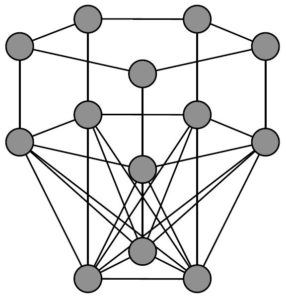
Guest-edited by Professor Marek Kimmel (Rice University), the new series is similarly concerned with the ways evolution is intertwined with cancer, and highlights progress made during the intervening years since 2010.
A message from the series’ Editor
“Mathematical modelling of evolution of cancer has undergone a further transformation in recent years. Laboratory techniques, which were revolutionary six years ago, are now gradually becoming routine. As an example, The Cancer Genome Atlas contains data on individual tumours which would be impossible to obtain without progress in sequencing. Subsampling of different locations in tumours and sequencing DNA from the samples has become a practical method of establishing heterogeneity. Similarly, cell barcoding and single-cell sequencing aids our understanding of the heterogeneity of cancer clones.
New data is now confronted with theoretical approaches that make it possible to infer the events of carcinogenesis and cancer progression with increased accuracy. This progress also allows us to better understand the relationship of heterogeneity and treatment outcomes”.
What’s new
The new series launches this week with five articles concerning the evolution of cancer cell populations, interactions between tissue structures and carcinogenesis and the impact of cancer heterogeneity on optimal therapies:
- Should tissue structure suppress or amplify selection to minimize cancer risk?
Laura Hindersin, Benjamin Werner, David Dingli and Arne Traulsen - Optimal Treatment and Stochastic Modeling of Heterogeneous Tumors
Hamidreza Badri & Kevin Leder - Tracking the evolution of cancer cell populations through the mathematical lens of phenotype-structured equations
Tommaso Lorenzi, Rebecca H Chisholm and Jean Clairambault - Primary and metastatic tumor dormancy as a result of population heterogeneity
Irina Kareva - The role of cell location and spatial gradients in the evolutionary dynamics of colon and intestinal crypts
Leili Shahriyari, Natalia L Komarova and Alexandra Jilkine
Coming up
In the coming months we also look forward to expanding the series to include new articles discussing the emergence of heterogeneity in acute leukaemia, multilayer spatial evolutionary games and personalized treatment strategies incorporating evolutionary dynamics.
As previously emphasized by Professor Kimmel, both a qualitative and quantitative understanding of cancer is a necessary condition for engineering effective approaches to treatment. Taken together, we hope the articles published in this thematic series will help shed light on the substantial progress being made by cancer researchers and mathematical modellers alike.
All articles in the series can be read here and further research will be added in the coming months.
Thomas Appleyard
Latest posts by Thomas Appleyard (see all)
- The role of APOE4 during the earliest stages of Alzheimer’s disease. A Q&A with Professor Guojun Bu - 15th November 2016
- Evolution and cancer: A mathematical biology approach II - 23rd August 2016
- Quiz: Test your (action) potential! - 14th March 2016
Comments